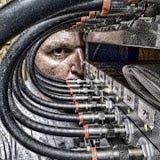Wireshark Captures with Dumpcap
In this video, learn how to use a dumpcap utility that streamlines scheduling of packet captures.
February 23, 2018

One of the tricky things about troubleshooting with network protocol analysis is getting comfortable with unattended capture when you need to start a capture at a specific time. There are three ways to approach this with Wireshark:
Write a script or macro that will navigate around the screen’s GUI and start/stop the capture.
Use the Tshark Wireshark utility and a scheduling program
Use the dumpcap Wireshark tool and a scheduling program
The problem with the first option is that if anything on the screen is repositioned, the script will fail. There has always been quite a debate over Tshark and dumpcap. I can safely say that when performance is a concern, dumpcap is the clear winner.
This is where DumpcapUI from Douglas A. Dietz comes in. This portable utility allows you to configure some of the more common dumpcap features using a GUI interface and configure a task in your Microsoft Scheduler.
In this video, I show how to get started with DumpcapUI.
I strongly recommend testing your configuration before scheduling or going live with any configuration and to use ring buffers for long-term capture. Also, use file size as your “Next file every” option instead of time. Unless you have a really good grasp of filtering and what traffic to expect, you have no idea how much traffic you will capture within a given time frame. Please see my previous video on large packet capture.

dumpcap.png
About the Author
You May Also Like




